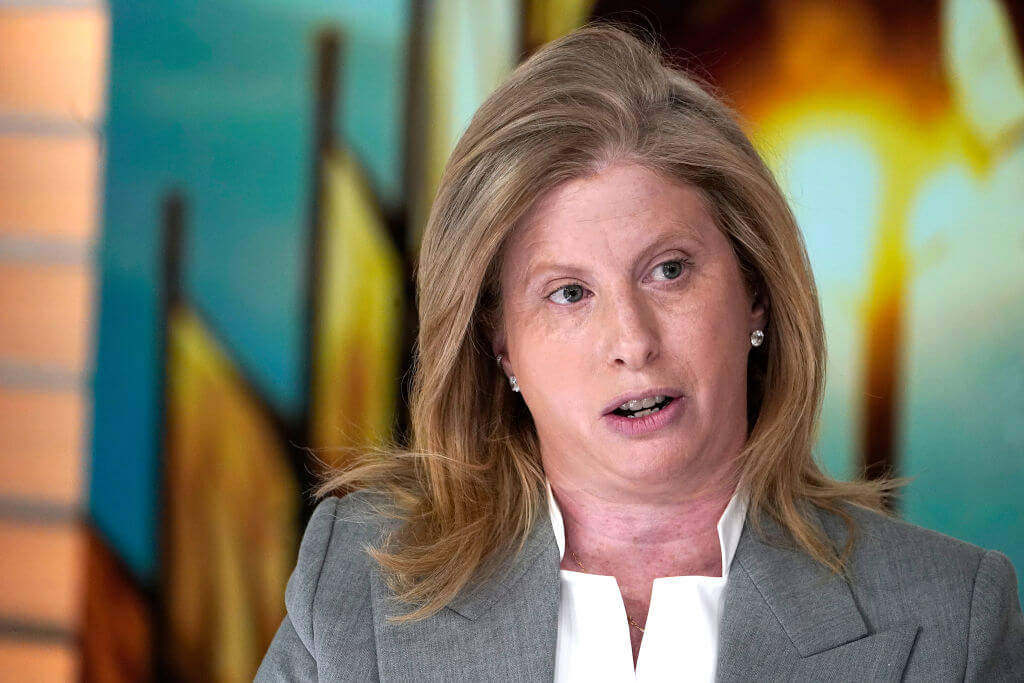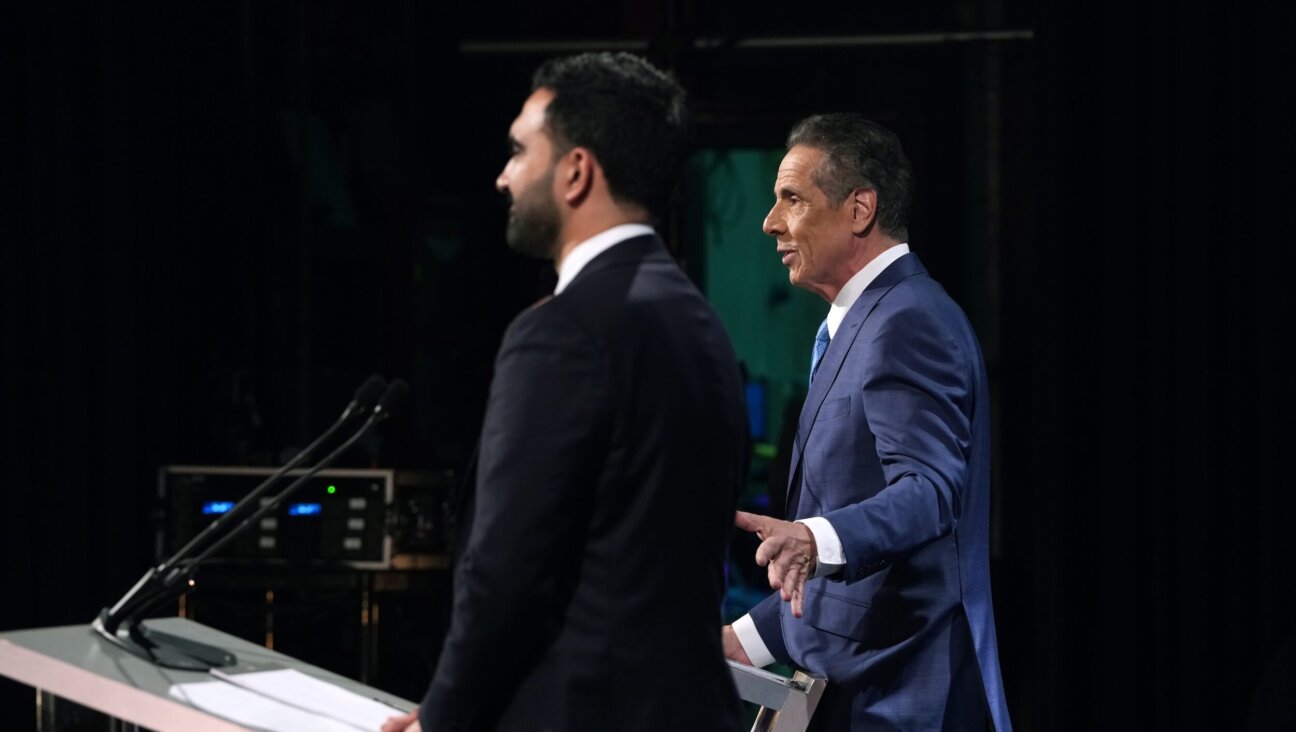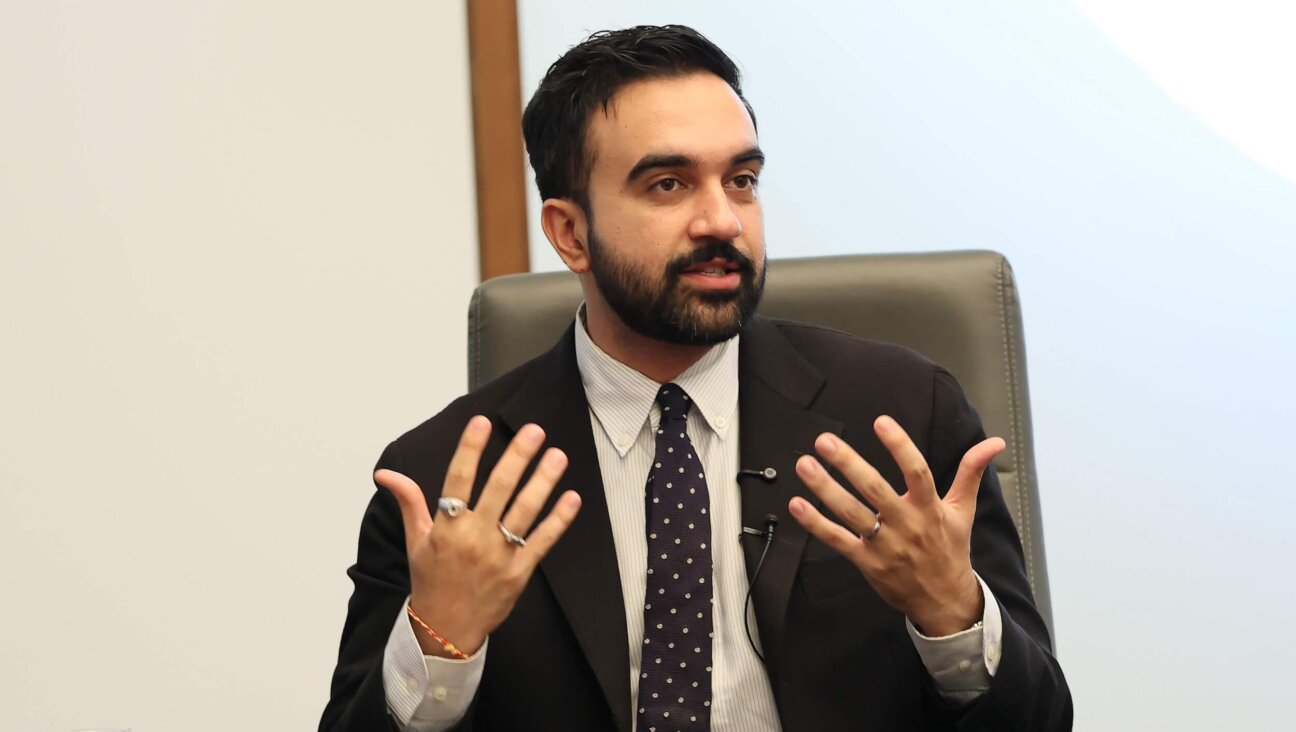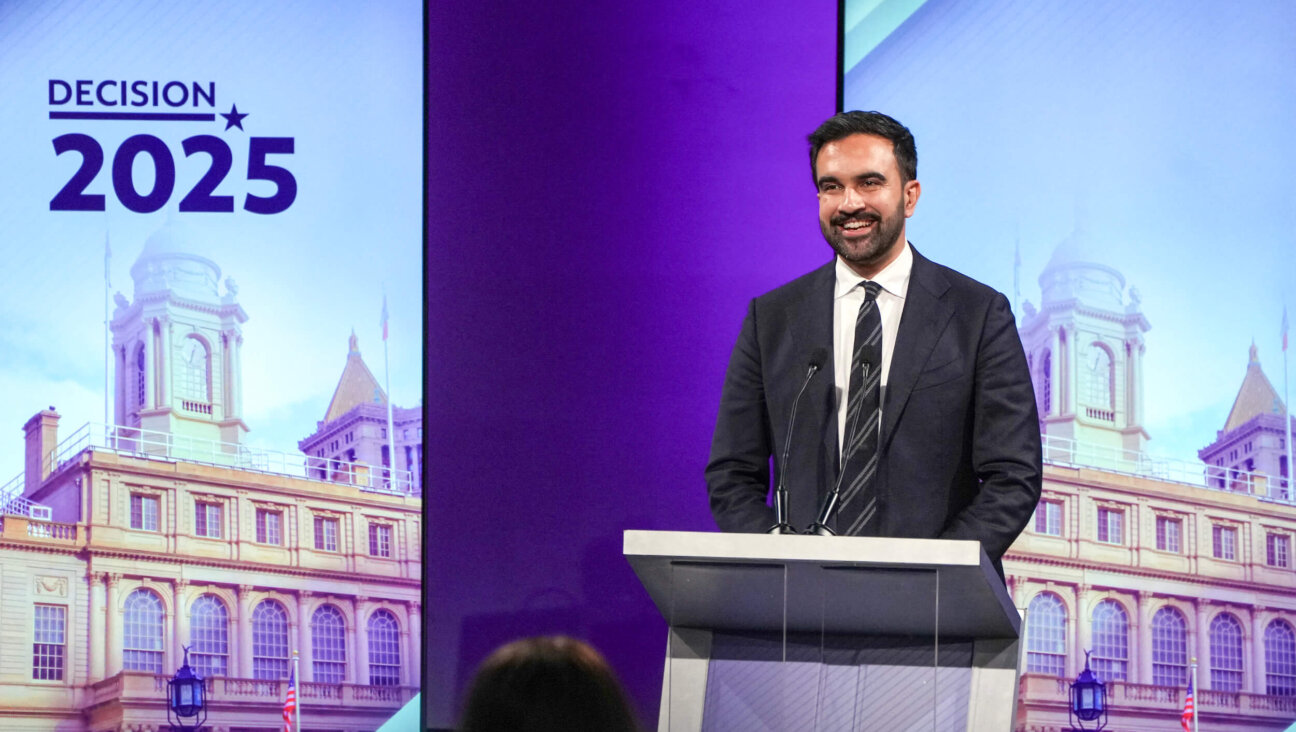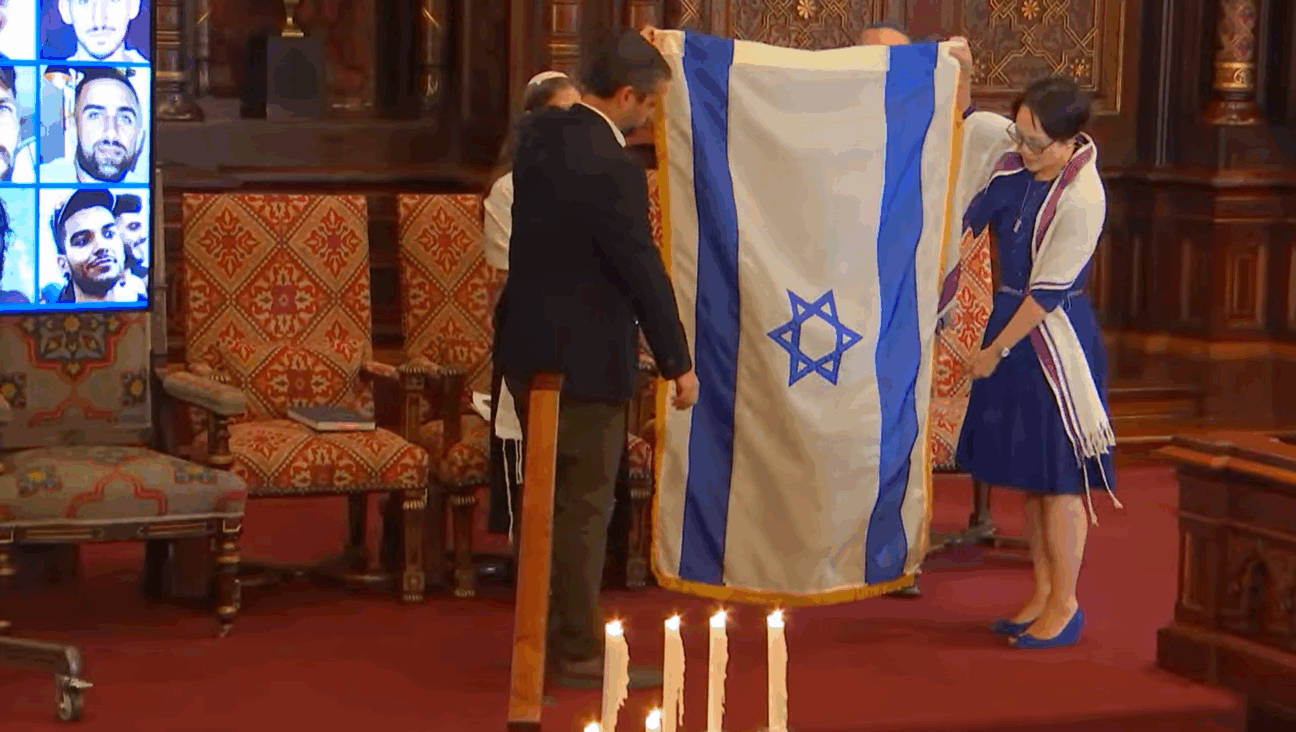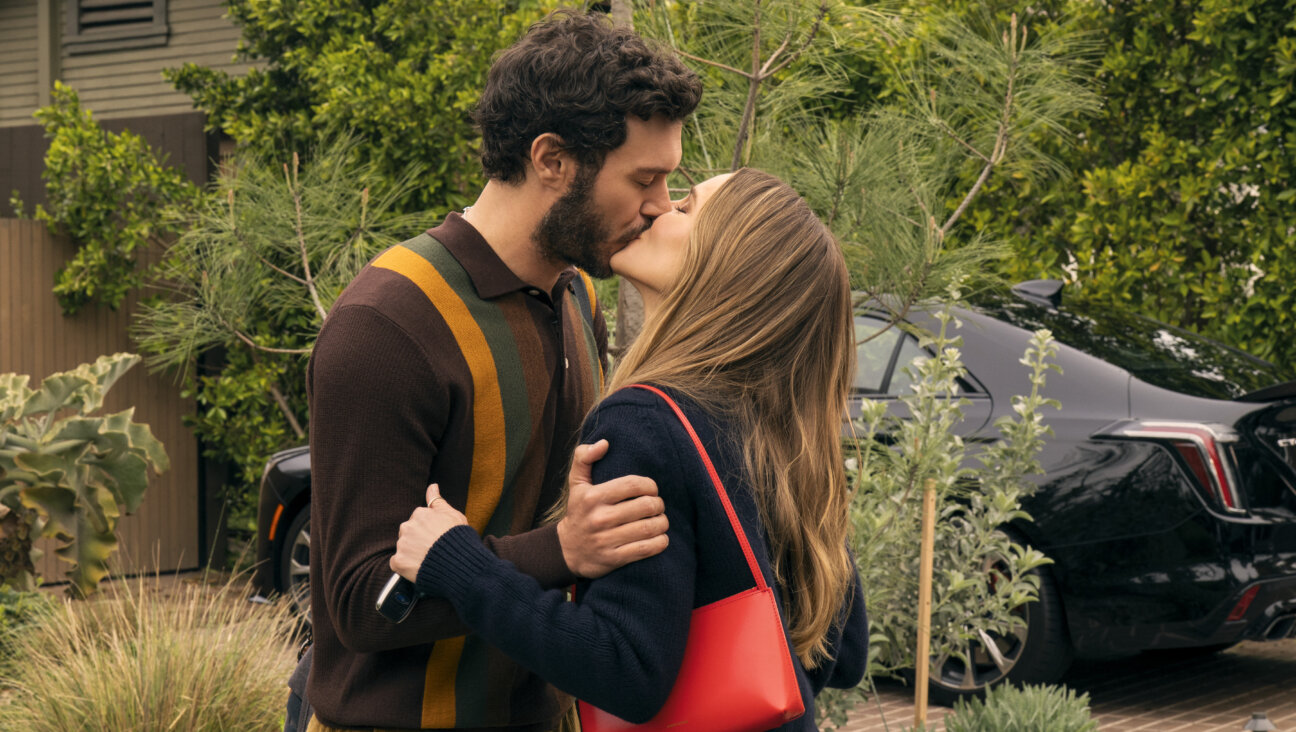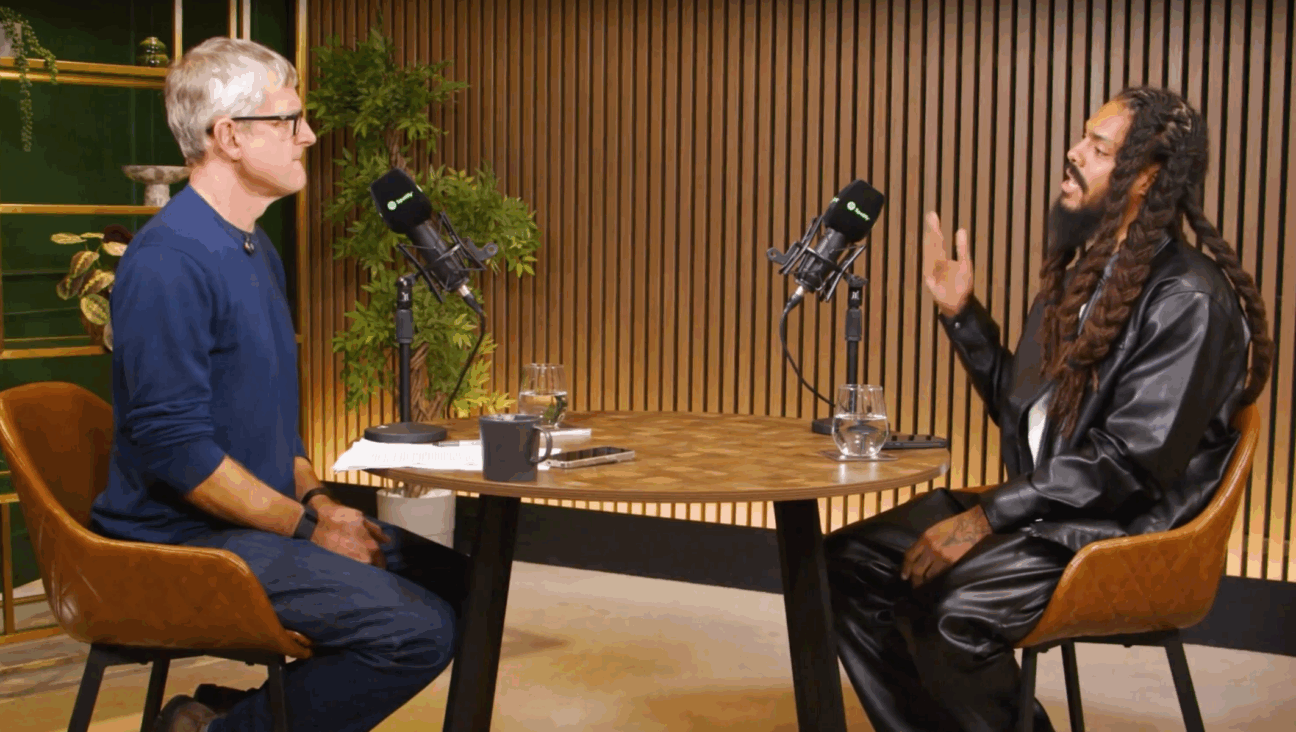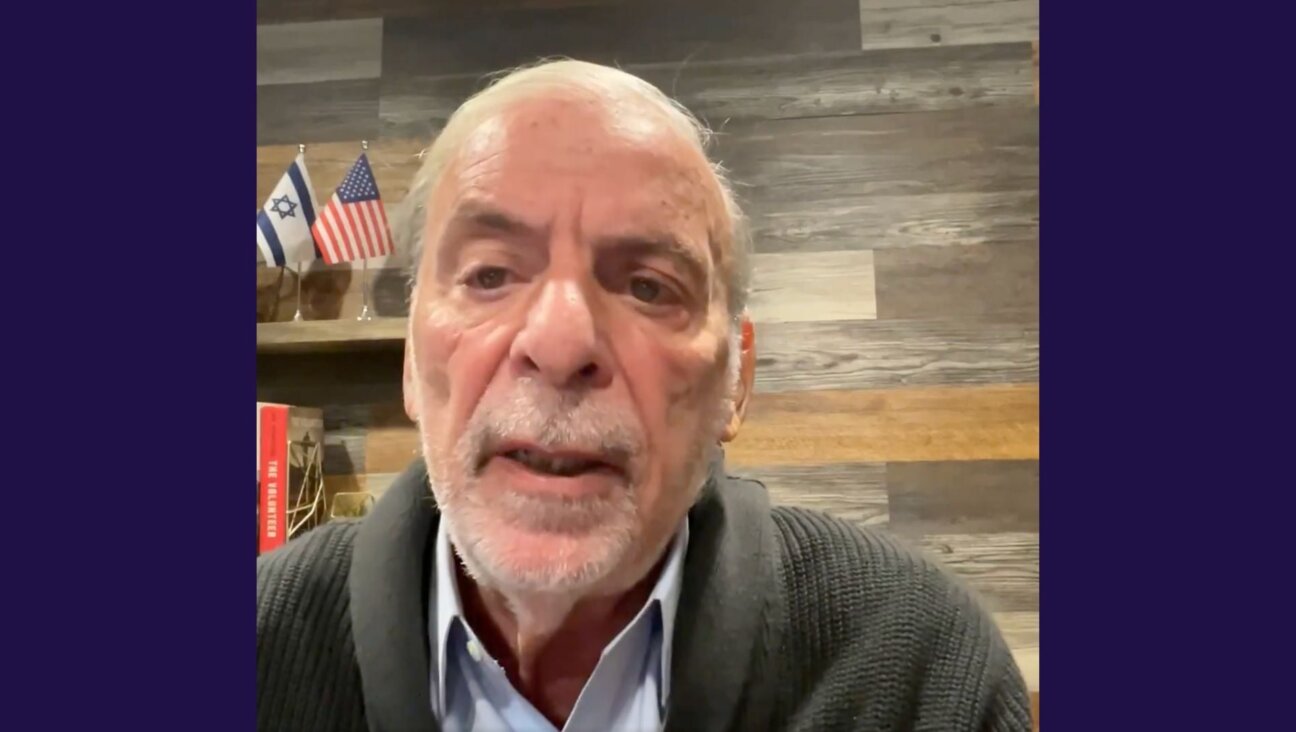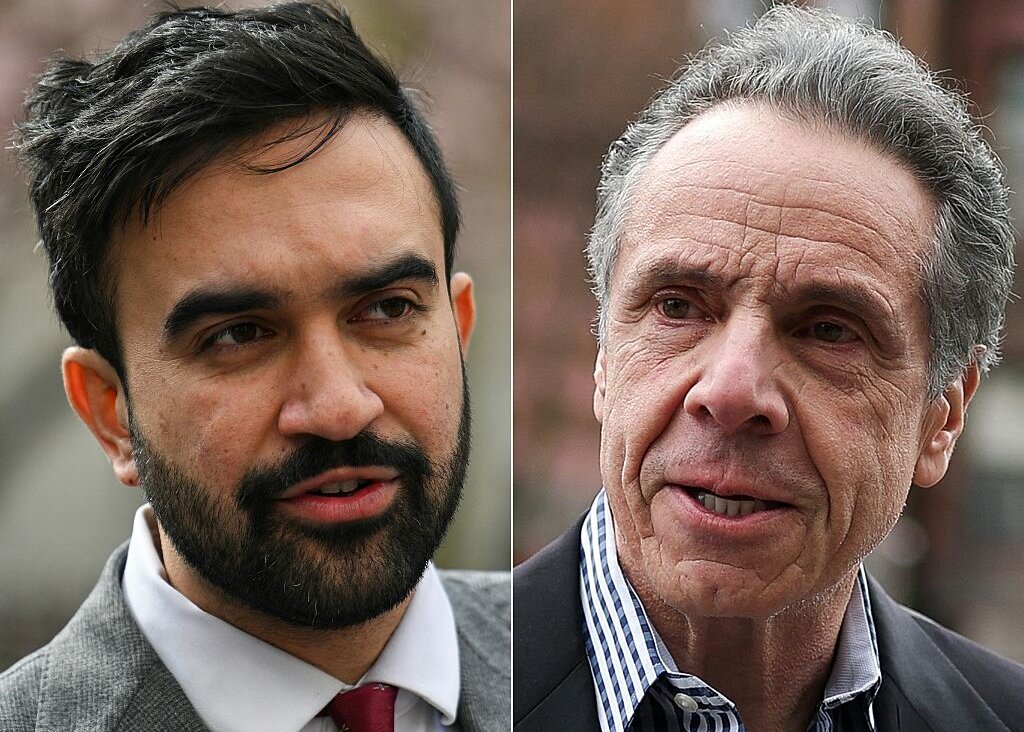Divine Intersection: The Surprising Story of the Jews Who Became Sufi Muslims

Spiritual Vision: “The Four Religions,” by Bawa Muhaiyaddeen, illustrates his idea of “religious unity,” joining Hinduism, Zoroastrianism, Christianity, Judaism and Islam, the last two connected. Image by Courtesy of the Bawa Muhaiyaddeen Fellowship
At a burial shrine set in the rolling farmland of Pennsylvania, a group of Sufi devotees swayed in prayer, chanting the many names of God. The women, heads covered in loose shawls, sat on one side; the men, some clutching prayer beads, on the other. One woman, overcome with emotion, wept openly.
At the center of the domed room lay the casket that holds the entombed body of their sheikh, a Sri Lankan Sufi mystic named Bawa Muhaiyaddeen. David Katz, raised in a Reform synagogue in Wisconsin, was among the pilgrims gathered here last week, to celebrate their late leader’s arrival in America 45 years ago.
“I was brought up thinking there is absolutely one way to be Jewish,” said Katz. “But there are a lot of other ways to be Jewish.”
For Katz, being a Sufi is one of them.
In the 1970s, Katz was one of many soul-searching American Jews who gravitated toward Bawa, a mysterious mystic from Sri Lanka who presided over an eclectic Sufi Muslim community in the Philadelphia neighborhood of Overbrook, known as the Bawa Muhaiyaddeen Fellowship.

Members of the community with Jewish roots. Clockwise from top left: Jonathan Granoff, Nina Ginty, Beth and Samuel Dalil Muhaiyaddeen Sheard, and David Katz. Image by Sam Kestenbaum
During the countercultural movement of the 1960s and 1970s, Jews experimented with many types of practices — some converted to Christianity, others delved deeply into Judaism. Some Jews made clean breaks from their Judaism while others held on to part of their Jewish identity: Jewish Buddhists or “Jewbus,” for instance.
At the Fellowship, they became Sufis, part of a centuries-old mystic strain of Islam. Three decades after Bawa’s death, these Jews continue to play prominent roles in the Fellowship.
And the title some use? Jewfis.
Their spiritual paths may be winding, but their stories show the persistence of Jewish identity over generations — and through religious change.
Bawa’s Fellowship has a total North American membership of perhaps 2,000, with main hubs in Philadelphia and Toronto and smaller branches elsewhere. Only a fraction of members are Jews, but they are highly represented in leadership roles — two presidents, and other board members come from Jewish families — and formed an inner circle in the early days of the Fellowship. These Jews helped fund Bawa’s venture, attracted new members and shaped the culture of the group.
Some Jewish members pray five times a day; others say that the great outdoors is their temple. One man, from a family of Holocaust survivors, leads Passover seders at his home — and used to organize regular pilgrimages to Mecca and Medina.
One woman wears a hamsa charm around her neck; another adorns her home with Hebrew and Arabic prayers. In some cases, the Fellowship is now three generations in, and some children of original members want to rekindle their connection to Jewishness and go on Birthright — but are grilled about their Islamic names.
At the Fellowship, religious boundaries are fluid — very. Part of this has to do with Bawa himself and the message he preached.
Beginnings: ‘We Called Ourselves Bawa’s Children’
Much about Bawa’s life is unknown. By one account, nearly impossible confirm, he migrated to Sri Lanka from India before the turn of the 20th century. He emerged from the jungles of Sri Lanka in the 1940s and spent time at shrines in the south of the country where he was known as a healer and miracle worker.

Guru: Bawa emerged from the jungles of Sri Lanka in the 1940s and attracted a diverse following, even before arriving in America, of Christians, Muslims, Hindus and Buddhists. Image by YouTube Screenshot
“Everything about him was mysterious and mystical,” said Frank Korom, a professor of religion and anthropology at Boston University who has studied the Fellowship for years.
In the 1960s, Bawa’s fame spread. He moved to Sri Lanka’s capital, Colombo, and gained a following with young urban students.
He had a diverse following, including Muslims, Christians, Hindus and some Buddhists.
Then, in 1971, Bawa accepted an invitation to visit Philadelphia, sent by an American woman who had learned of Bawa through a Sri Lankan student and who wanted to meet the spiritual teacher face-to-face
In Philadelphia, Bawa put down roots.
There are many Sufi orders, but all trace their lineage back to the Islamic prophet Muhammad. Sufism has often found itself at odds with more conservative Islamic branches, as Sufis may prioritize the esoteric and experiential over rigid doctrine.

Image by YouTube Screenshot
For Bawa and his early disciples, their practice was about cultivating a direct relationship with God and transcending religious and racial divides.
“Religions are the cause of murder, wars, evil, differences and discriminations,” Bawa said in a discourse in the 1980s. “How many murders, how many wars, how many lives are lost in battles of racial and religious difference?”
All religions were one at their essence, he taught, races and ethnic divisions simply distractions. Bawa taught basic meditative chants. And he instructed his followers to keep vegetarian diets, give up drinking and drugs and abstain from premarital sex.
Bawa spoke only Tamil, a national language of Sri Lanka, and delivered his winding discourses through translators.
A mixed crowd came to hear Bawa’s message. Some were Sri Lankan supporters, including translators, who had followed him to America. They were joined by members of the Moorish Science Temple, a black nationalist group popular in Philadelphia, and individuals who had splintered off from the Nation of Islam.
Christians who were un-tethered from the Catholic or Protestant churches they grew up in found in Bawa a more open-ended spirituality.
Religiously nonaffiliated Jews seeking a new spirituality also arrived at Bawa’s doorstep. Not all of their families liked this (some parents worried their children were getting involved in a dangerous cult) but the devoted found ways to stay.
By 1973, Bawa was seeing so many visitors that his American followers decided to purchase a larger home for their group. In the leafy neighborhood of Overbrook in Philadelphia, they found an old Jewish Community Center for sale. It seemed like a perfect place to make their home.

The room where Bawa lived in Philadelphia is treated with reverence. His chair and bedside table are arranged carefully; his bed neatly made. Image by Sam Kestenbaum
The ground floor had served as a sanctuary for Jewish prayer. The Torah was removed and on the bimah they put Bawa’s chair, where he would sit and expound to his disciples.
New members moved in and slept at the Fellowship. Others bought homes nearby to be close to their guru. From early on, Bawa’s followers recorded as much of what their teacher said as possible, filming his discourse or recording the audio — neatly labeling the lectures and filing the recordings away on the second floor of the Fellowship for future generations.
“If you and I and a few other people become good, then that might stop the destruction,” Bawa once said. “If all of us join together and make noise, God might come.”
Jewfis: ‘I Looked in Judaism, I Really Did’
Many of Bawa’s Jewish followers had looked for spiritual answers in Judaism, but hadn’t found what they were looking for. The story of Nina Ginty, born Nina Wolk, is illustrative.
Ginty was raised going to a Reform synagogue in New Orleans, but she never felt any spiritual spark there. Swept up in American Jewish support for Israel following the 1967 Six Day War, she moved to Israel in 1972 to work on a kibbutz. She thought maybe Zionism could fill the void she felt inside.
“I was definitely thinking there might be something there, something spiritual in the State of Israel,” Ginty said. “I treated it like holy ground, I really did.”
She found herself in an embattled village on the Syrian border, working as a cook. But the violence of the border, and the nature of the conflict in general, troubled her. When her kibbutz was shelled, and the buildings shook at night, she wondered if she would die before finding answers to her aching questions.
Ginty went to historical sites hoping to find some meaning in an ancient Jewish connection to the land. She climbed Masada and climbed through other archaeological digs.

Sojourner: Nina Ginty traveled to Israel in the 1970s, in something of a spiritual quest, and worked on a kibbutz. She found the experience unfulfilling and later met Bawa. Image by Sam Kestenbaum
“I sat among these ruins and said, ‘Who lived here? What were they like?’” Ginty said. “I just looked out over the Judean Desert and thought I was one big question, my life was one big question mark.”
Soon after, she left Israel. Ginty kept traveling and dabbled in Christianity and Buddhism (studying with a Cambodian teacher) before hearing about Bawa from a friend. She was immediately drawn in. “There was such beauty around him,” she said.
Jewish students came to Bawa with their own distinct questions. Musa Muhaiyyadeen, born E. L. Levin, wanted to know what it means for a people to be “chosen,” something he had always heard growing up in a Jewish home.
“His answer was ‘Yes, the ones who chose God, God chooses them back,’” Levin said. The answer felt revelatory. “Just because you claim to be something, a race, a particular religion doesn’t mean anything. It was what your skin was, what you were born into.”
Jewish interest in Sufism and alternative spirituality surged in the years of Bawa’s teaching in the United States, and extended to some high profile rabbinic figures.

Spiritual Vision: “The Four Religions,” by Bawa Muhaiyaddeen, illustrates his idea of “religious unity,” joining Hinduism, Zoroastrianism, Christianity, Judaism and Islam, the last two connected. Image by Courtesy of the Bawa Muhaiyaddeen Fellowship
Among Bawa’s better-known Jewish visitors was Rabbi Zalman Schachter-Shalomi, an ordained Chabad-Lubavitch rabbi who was also a part of the countercultural spiritual movement swirling through North America. Today, the late Schachter-Shalomi is considered the father of the Jewish Renewal movement, which reintroduced Jewish mystic and meditative traditions into synagogue services.
Then, he was just a young Jewish teacher with a small following.
In 1980, Schachter-Shalomi visited Bawa at the Fellowship. At that time, Schachter-Shalomi led his own alternative community in Philadelphia, and he brought a handful of his students along. The two leaders traded songs — one Jewish, one Sufi — back and forth. Then they embraced.
It was a kind of affirmation. There was a real crossover happening at the Fellowship, and other Jews were seeing it. Bawa said of Schachter-Shalomi: “I haven’t seen someone with such a pure heart in a long time.”
Years later, Schachter-Shalomi would found his own “Sufi-Hasidic” group.
Transitions: ‘What Religion Are You?’
In the last years of Bawa’s life, many followers began pressing him for more guidance. They wanted to know how to preserve the way of life they’d cultivated under his roof. He had, in their view, helped them transcend the trappings of their ethnic or religious backgrounds, and were eager to learn how to preserve this wisdom.
“When he started teaching, it was spontaneously people coming and asking him questions,” said Anne Katz, who joined the Fellowship at the same time as her husband, David. “He found himself answering the same question over and over again, people were pressing him for a kind of ritual structure.”

Bawa Muhaiyaddeen came to Philadelphia in 1971 and presided over a religiously and racially diverse community in the suburbs of Philadelphia for 15 years. A portrait of Bawa, who “speaks of God,” hangs at the Fellowship headquarters. Image by Sam Kestenbaum
In 1983, Bawa spearheaded the construction of a mosque. But not everyone was happy with the development. Some members felt that they had come to a teacher who said that God was beyond religious institutions — weren’t they just setting up another?
But the mosque was built, making it the first mosque built from the ground up in Philadelphia.
Fittingly, given all of the history, the inaugural speech was given by a yarmulke-clad father of one of Bawa’s followers.
And with the building, the Fellowship has more or less joined the wider Philadelphia Islamic world. When it hosts Eid celebrations, more than a thousand other Muslims gather at their building for a lavish vegetarian feast. The Fellowship’s imam, Richard Miller, served as a chaplain to the Philadelphia police department and is a member of a prominent city Islamic council and part of the Greater Philadelphia Interfaith Center.
Was something lost as the community has become more and more of an institution? The question still lingers in the community.
“The idea of calling Bawa any religion to me is preposterous,” said Jonathan Granoff, another early student of Bawa’s from a Jewish background. “He was way beyond the confines of any definition. He was a man of supreme wisdom.”
Levin said he still sometimes worries about the Fellowship becoming a rigid institution and the “loss of freedom, the loss of a teaching that’s free.”

A group photo at the Fellowship during the annual October reunion in 1994. From the early years, the communtiy has fastidiously documented their own history through photos, videos and audio recordings. Image by Sam Kestenbaum
At the same time, Levin reflected, there has to be a balance.
“You have to give it some sort of form,” Levin said, “or it begins to fall apart and becomes New-Agey.”
Some embrace the move toward more orthodox Islam; others hardly step foot in the mosque. Fellowship policies about gender roles — and whether or not the community can openly accept homosexuality — are sources of division.
At a council meeting of the national branches, one member voiced concern about the young members not coming to Fellowship meetings. “Invite your sons and daughters,” she urged. “It’s a big void.”
And some younger Jewish members, raised as Sufis, find themselves seeking — much as their parents did. “They know that their parents are converts, and they may want to know who they are at their core,” said Boston University’s Korom. “They may begin to reclaim their Jewishness.”
Young members are navigating their place in a religiously diverse institution, said M. Shobhana Xavier, a religious studies professor at Fanklin and Marshall who wrote her PhD thesis on the Fellowship.
This ongoing negotiation, this balance of different religion, ethnic and cultural influences, according to Xavier, “not only captures the complex institutional reality of the Fellowship, but also of American Sufi movements more broadly.”
When Bawa died in 1986, he was buried an hour and a half away from Philadelphia, in Coatesville, on land purchased by the Fellowship. His shrine sits on a small hill overlooking farmland. A carefully tended vegetable garden grows nearby.

Brother and sister Saajid Nuruddeen King and Rabia Rose Nur Muhaiyaddeen King were raised in the Fellowship and are part of a younger generation interested in their Jewish backgrounds. Both recently travelled to Israel. Image by Sam Kestenbaum
After praying at the shrine, Fellowship members filed out into the sun, embracing or walking arm in arm to lunch. An autumn spread of fruits and vegetables, harvested from the property, was laid out on a foldout table.
A pair of Jewish siblings raised in the Fellowship sat cross-legged in the grass nearby, eating the vegetarian meal on styrofoam plates. One had recently traveled to Israel and said she had been pulled aside for questioning at Ben Gurion Airport. She knew why — her full name is Rabia Rose Nur Muhaiyaddeen King, surely a source of confusion for airport security.
King, whose Israeli cousins live in Jerusalem, is planning on going to Israel again this year. Her brother, Saajid Nuruddeen King, went on Birthright, too (and was also questioned at the airport, he said).
King said that sometimes she wishes her family’s story was easier to tell — “that I was just a regular American” — that she didn’t have to explain what a Sufi is, how her Jewish family practices a kind of Islam. She picked at the grass as she spoke. Sometimes when she’s asked, “What religion are you?” she recites a poem, sometimes she simply says “Jewish” or “Muslim” or nothing at all. It depends on the audience.
Ginty, the woman who made her own sojourn to Israel in the 1970s, sat nearby. She said she also thought about Jewish continuity.
Her mother, who had come in her final years of old age to live in Pennsylvania with her, was buried behind Bawa’s shrine, in a plot reserved for Fellowship members. Muslim and Jewish burial rites, Ginty discovered, had many similarities: The dead must be washed thoroughly, for example, and wrapped in a simple shroud.
“I was a wanderer,” she said. “It all started with my Judaism.”
Email Sam Kestenbaum at [email protected] and follow him on Twitter at @skestenbaum


